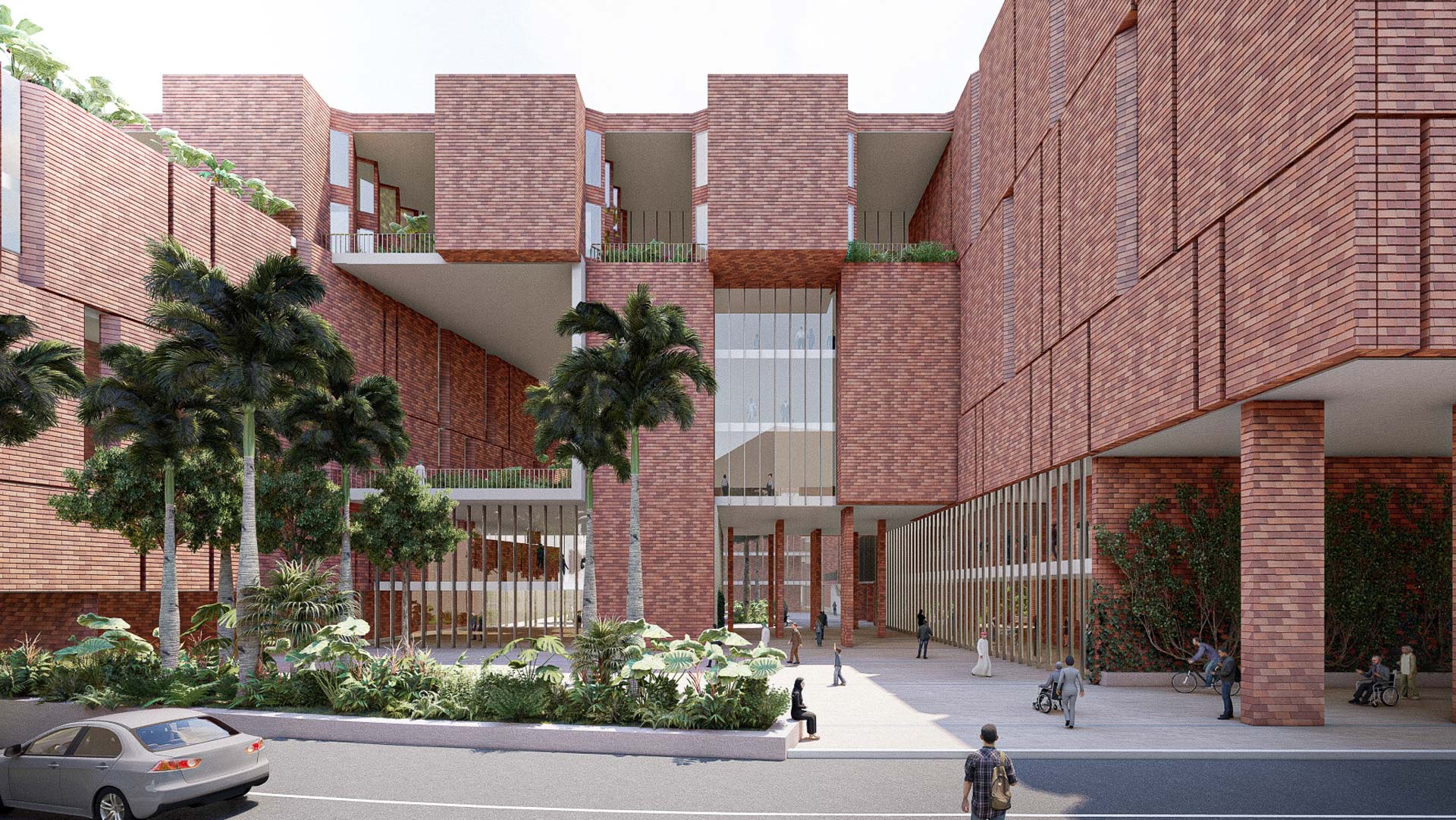Samajik Health Science Institute & Research Centre, Dhaka, Bangladesh

The Samajik Health Science Institute & Research Centre will be an international health care facility with comprehensive specialties accessible and affordable to everyone with the mission of delivering excellent healthcare with care and compassion. Samajik is a primary 500-beds teaching hospital, with one wing entirely dedicated to a medical school, which will be connected to a bigger network of local and regional secondary hospitals and clinics.
The work of Transsolar, together with MASS Design Group, begins with the design of the envelope: the openings are carefully sized, in order to provide visual connection to the outside, and air inlets for natural ventilation, while at the same time minimizing solar gains, particularly critical in the climate of Dhaka.
Once the envelope was optimized, the whole design team worked together in order to detect the areas which are eligible for periods of natural ventilation, such us the patient wards, the administration areas and the medical school.
The patient wards have a system of terraces envisioned as mid-door spaces where the visitors can gather with the patients; these are also used to pre-treat the natural flow of outside air entering the building during periods of natural ventilation. In fact, the air intakes have been located on those exterior walls of the patient wards which are adjacent to the mid-door spaces in order to supply pre-cooled and filtered air, from an environment which is acoustically protected against the traffic at the street level. Air quality in Dhaka is critical; this is why, in addition to using the mid-door spaces as natural filters and sound absorbers, the design team decided to locate the patient wards at the highest possible floors of the hospital. The supplied outside air is then extracted by a system of independent solar chimneys, assisted by exhaust fans on the roof which have been sized for extremely low-pressure drops. The interior spaces have exposed thermal mass, which is naturally cooled by night flushing, when possible. Ceiling fans are used to provide additional comfort, and to extend the periods of natural ventilation.
The administration areas and the medical school can also be operated in fan-assisted natural mode, thanks to a series of horizontal ceiling plenums per floor, which allow to bring natural air from the façade to the heart of the building.
On days with high pollution levels, or when the outdoor temperatures are too warm or too humid, the entire building is operated in mechanical mode. Transsolar worked with Arup to integrate the natural and mechanical ventilation systems, reducing fan energy use when in mechanical mode, simplifying layouts, and eliminating significant quantities of ductwork.




